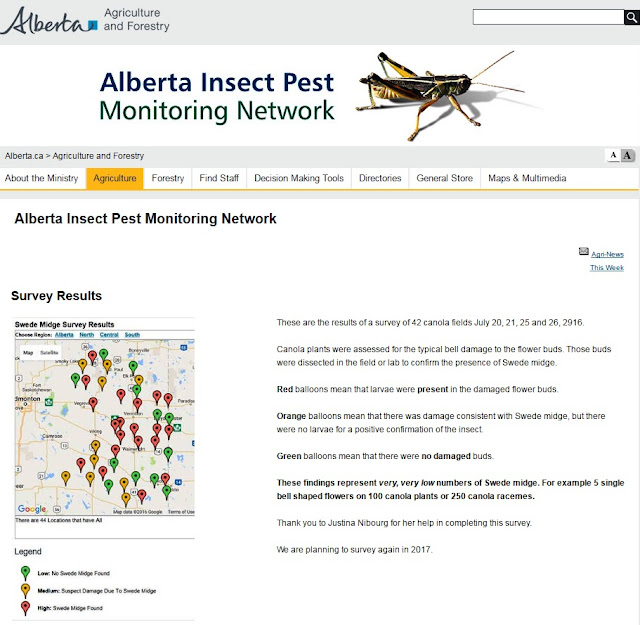None of the traps were positive for swede midge in 2016.
We are grateful to all of the producers, agronomists, and cooperators who participated in the 2016 swede midge monitoring project. Without your assistance, we could not have supported such a thorough and widespread pheromone monitoring program.
We also extend our thanks to Nancy Melnychuk (AAFC-Saskatoon) for organizing the program, distributing trapping materials, and processing returned sticky cards for adult swede midge.
Because of the serious threat that swede midge poses to canola production, it is vital that monitoring for swede midge continues across the Prairies. At this time, plans are being made for the 2017 swede midge monitoring program. Agrologists or growers interested in performing weekly monitoring in 2017 are encouraged to email either your provincial entomologist or the survey researchers hyperlinked below for more information.
Owen Olfert (AAFC-Saskatoon)
Boyd Mori (AAFC-Saskatoon)
Meghan Vankosky (AAFC-Saskatoon)
John Gavloski (Manitoba Agriculture)
Scott Hartley (Saskatchewan Agriculture)
Scott Meers (Alberta Agriculture & Forestry)
More information about swede midge can be found by:
• Referring to the Canola Watch article by Dr. Julie Soroka or accessing a new Ontario fact sheet produced by Baute et al. 2016.
• Accessing the swede midge pages within the new Field Guide which is available as a free download in either English or French.

• Referring to the Canola Watch article by Dr. Julie Soroka or accessing a new Ontario fact sheet produced by Baute et al. 2016.
• Accessing the swede midge pages within the new Field Guide which is available as a free download in either English or French.



















